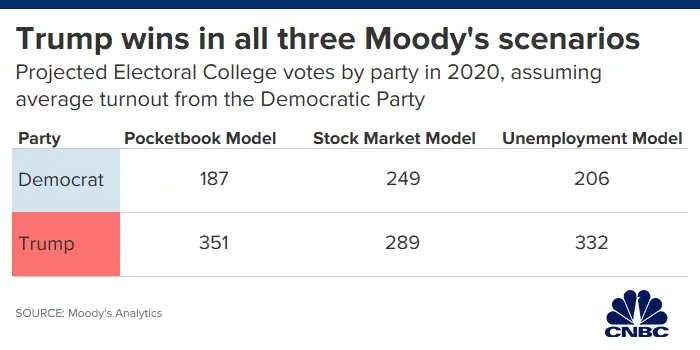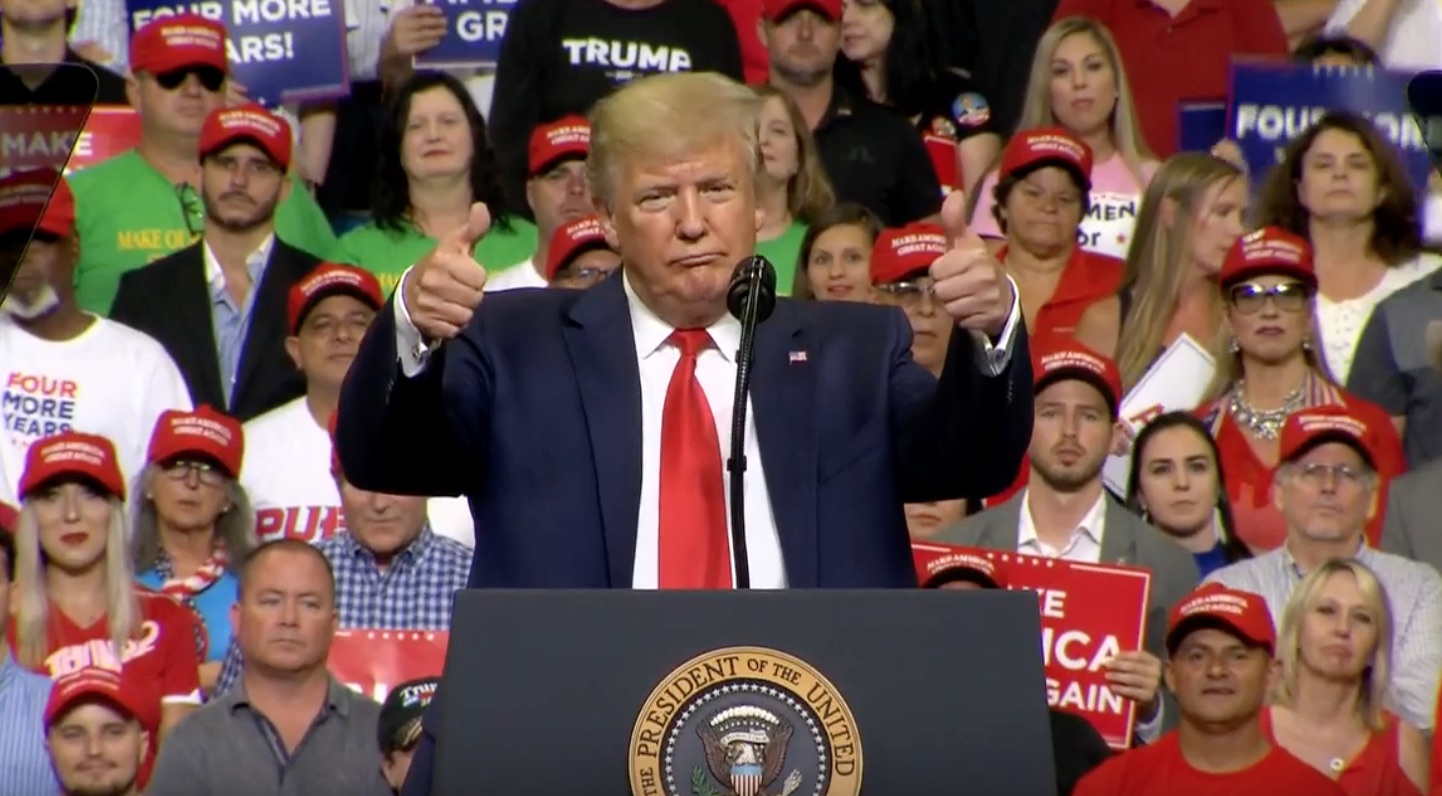According to new data released by Moody’s Analytics, President Trump is on track for a win in 2020 if the economy holds steady and remains a central issue into next year. The election model, accurate when tested against elections back to 1980, with the exception of 2016, shows that voters tend to vote with their wallets, and the economic growth numbers coupled with low unemployment point to a big possible win for Donald Trump.
Critics and analysts often point to the President’s low approval ratings and generally unfavorable poll numbers from voters, but as the Moody’s model explains, that might not make a difference:
Barring anything unusual happening, the president’s Electoral College victory could easily surpass his 2016 win over Democrat Hillary Clinton, which came by a 304-227 count.
Moody’s based its projections on how consumers feel about their own financial situation, the gains the stock market has achieved during Trump’s tenure and the prospects for unemployment, which has fallen to a 50-year low. Should those variables hold up, the president looks set to get another four-year term.
The modeling has been highly accurate going back to the 1980 election, missing only once.
“If the economy a year from now is the same as it is today, or roughly so, then the power of incumbency is strong and Trump’s election odds are very good, particularly if Democrats aren’t enthusiastic and don’t get out to vote,” said Mark Zandi, chief economist at Moody’s Analytics and co-author of the paper along with Dan White, the firm’s director of government counsulting and fiscal policy research, and Bernard Yaros, an assistant director and economist. “It’s about turnout.”

The one caveat, admits Moody’s, is voter turnout. If things stay the same as they did in 2016, or follow typical presidential years and models, then President Trump is sitting in pretty good shape according to the data.
However, if Democrats can cause an uprising with more motivated anti-Trump voters, they may easily overcome the economic numbers:
The caveat comes in the form of voter turnout. The report claims that if turnout among Democrats and independents match their maximum historical highs, Trump would lose in a tight race.
“An average of the three sets of model results suggests that if turnout of nonincumbent voters in 2020 matches the historical high across states, then Democrats would win a squeaker with 279 electoral votes to the president’s 259,” the report reads.
“Michigan, Wisconsin, Pennsylvania, Virginia, Minnesota and New Hampshire would all flip from Trump’s column versus our average turnout baseline.”
This type of model and report is one of those things filled with evidence in support and opposition to itself. In other words, according to the data, President Trump might win in a landslide, unless “this, and this, and this happens,” then he’ll lose. It’s certainly a noteworthy news item since these types of models can prove very accurate assuming the circumstances follow a typical election model. On the other hand, Moody’s was wrong in 2016, so their model is imperfect in some way.
Back in March, we covered another election model that Politico wrote about which caused waves among political observers at the time:
“The economy is just so damn strong right now and by all historic precedent the incumbent should run away with it,” said Donald Luskin, chief investment officer of TrendMacrolytics, a research firm whose model correctly predicted Trump’s 2016 win when most opinion polls did not. “I just don’t see how the blue wall could resist all that.”
Models maintained by economists and market strategists like Luskin tend to ignore election polls and personal characteristics of candidates. Instead, they begin with historical trends and then build in key economic data including growth rates, wages, unemployment, inflation and gas prices to predict voting behavior and election outcomes.
Yale economist Ray Fair, who pioneered this kind of modeling, also shows Trump winning by a fair margin in 2020 based on the economy and the advantage of incumbency.
The caveat with the Politico article from some months back once again deals with whether the President makes any unforced errors or the country moves in a downward economic trend. The models use a snapshot of data as it stands right now, but they can’t account for what may happen months from now before Election Day in 2020.
Still, these types of data points are worth exploring since it does show that public opinion polls aren’t everything, and they certainly aren’t the only thing that campaigns and data analysts look at when trying to forecast an election.
Donate Now to Support Election Central
- Help defend independent journalism
- Directly support this website and our efforts
